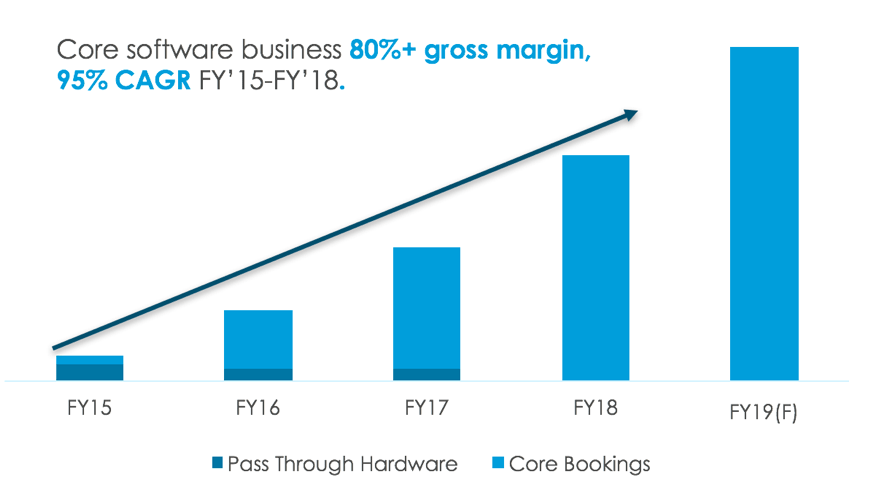
Three questions to Doug Murray, President and CEO of Big Switch Networks
Doug was appointed President and CEO of Big Switch in 2013 to lead the company on its Cloud-First Networking mission. Under his guidance, Big Switch has more than quadrupled headcount; shifted to a software-only, subscription-based recurring revenue model; solidified key partnerships with Accton/Edgecore, Dell EMC, HPE, Nutanix, RedHat and VMware; developed Open Network Linux, an open source NOS foundational component; and he played an integral role in raising two-thirds of the company’s $125 million of funding.
Big Switch started in 2010 with a very ambitious approach to solving the problem of software-enabled networking with a new approach called software-defined networking, which was coupled with what is called open networking hardware, this model disaggregated the infrastructure stack, offering more flexibility to end users. This was radically different than the approach the incumbent networking vendors offered, which were proprietary stacks.
After two years developing the flagship product, the team had to completely redesign its offering. The company had just raised $25 million in a Series B financing and had 26 employees. This is when Doug joined as CEO. They had six ideas on the white board. With the support of the original founders and the Board, the team thoughtfully picked the idea that was the most promising and started to execute. Today, the company boasts several hundred customers including 20% of the Fortune 100.
Philippe sat with Doug at his office in Santa Clara to discuss the topic of growth.
Can you describe the fastest revenue growth situation you have ever been involved with?
It is what I am currently experiencing at Big Switch. Doing the reset of the company was risky, but the bet paid off. The first product started to ship in 2014 and since then, the company, which has 250 employees has been consistently growing at 95% each year, reaching a double digit million-dollar revenue by 2017.

What was the most daunting growth challenge you faced and what actions did you take ?
In 2014, one of the largest financial institutions in the U.S. wanted to work with us, but only if we provided the networking hardware (so called the “White Boxes”). We reluctantly accepted and as a result, a significant portion of our revenue came from hardware sales. In fact, $3 to $4 of hardware are generated for each $1 we sell of our software solution, but the problem was that reselling hardware at a much lower gross margin has never been our mission. In January of 2016, I went to the Board and threw away the plan what had just been approved a month before and made the decision that we will only sell software under a SaaS business model. We were anticipating growing modestly that year, but thanks to a tremendous effort by everyone in the company, we were able to double again that year. It took a lot of sweat and courage to transition to a pure model and thankfully, the Board was very supportive in that transition. I have to say that I am blessed by the quality of the Board we have. We are so glad we did it and it was one of the best business decisions I have ever made.
What advice would you give to a CEO to accelerate the growth of her/his business?
I have two pieces of advice:
Surround yourself with people who have both extensive knowledge and relevant in a key business function (marketing, sales, product development, support, etc.) and who have run the growth engine. I use them as coaches, advisers and they are involved with the rest of my team as well.
Don’t get over your skis in terms of growth. It is hard to continually double revenue year after year. Raising capital and throwing more and more cash at it is not the answer. It is critical to realize that profitability will eventually matter a great deal. Keeping sight of it is important, as it will give you freedom and will make your business a lot more attractive target for an acquisition.